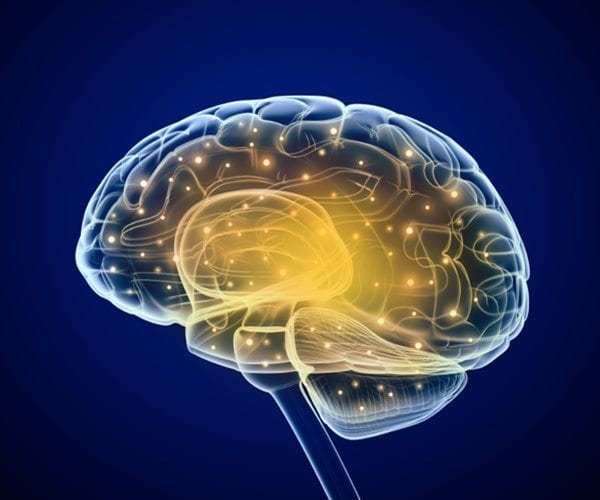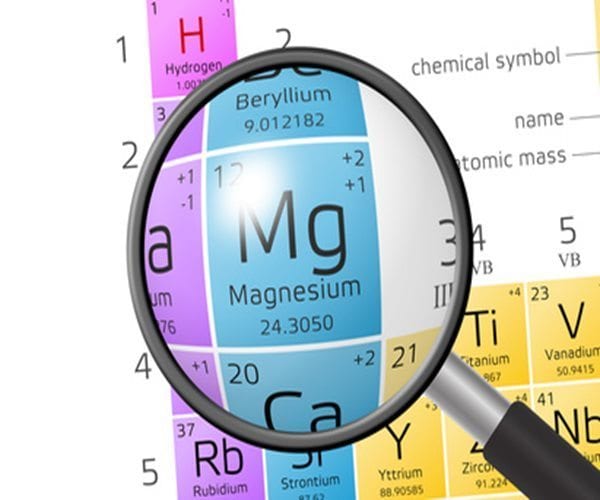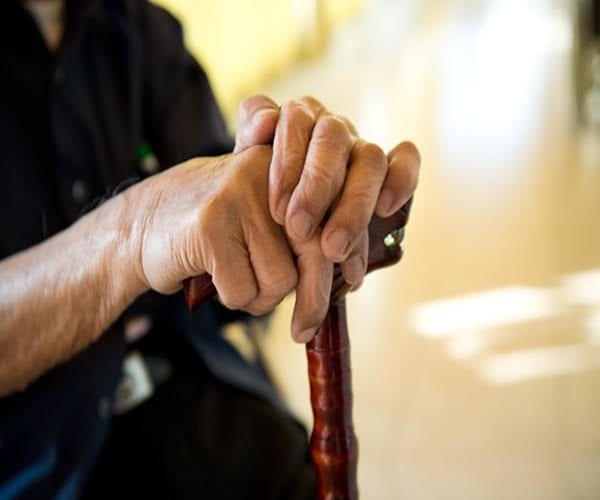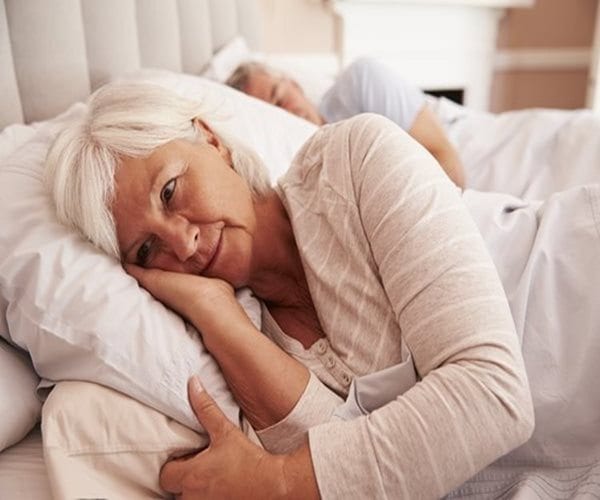Anti Aging
Back Clinic Anti Aging Chiropractic and Functional Medicine Team. Our body is in a constant and never-ending battle for survival. Cells are birthed, cells are destroyed. Scientists estimate that each cell must withstand over 10,000 individual assaults from reactive oxygen species (ROS) or free radicals. Without Fail, the body has an incredible system of self-healing that withstands the attack and rebuilds what has been damaged or destroyed. This is the beauty of our design.
To understand the biology of aging and translate scientific insight into interventions that improve late-life health through treatments. It is useful to have a clear, consensus view on what exactly constitutes anti-aging treatment.
Since before the days of Ponce de Leon’s search for longevity, man has always been enticed by the chance of eternal youth. Chiropractic care with its health movement is a powerful method of stabilizing and enhancing this self-healing ability. Dr. Alex Jimenez discusses concepts surrounding the anti-aging pandora.
.

by Dr Alex Jimenez DC, APRN, FNP-BC, CFMP, IFMCP | Anti Aging
A new study hints that young blood may harbor clues to a “fountain of youth” for older brains.
Researchers say blood from human umbilical cords appears to have helped reverse memory loss in aging mice.
The findings suggest that something in young blood is important in maintaining mental acuity.
No one, however, is saying that cord blood could be a magic bullet against Alzheimer’s or other forms of dementia.
For one, any effects seen in elderly rodents may fail to translate to humans.
Instead, the findings might set the stage for new drugs that target the dementia process, said study lead author Joseph Castellano. He’s an instructor in neurology at Stanford University School of Medicine.
“Part of what makes this exciting is that it suggests there’s more communication between the blood and brain than we’ve thought,” Castellano said.
The study builds on earlier work by the same Stanford team. There, the researchers found that old lab mice benefited from infusions of plasma (the liquid portion of blood) from young mice.
Specifically, the old mice showed improvements in learning and memory. This was measured by the ability to accomplish tasks like navigating a maze or building a nest.
The aim of the new study, Castellano said, was to see whether injections of human plasma given to mice could have similar effects.
It turned out that they did — at least when the plasma came from umbilical cords. Plasma from young adults had less of an impact. And plasma from older adults, ages 61 to 82, had no benefit at all.
That led to a critical question: What is it about umbilical cord blood that’s special?
The researchers found evidence that it might be a protein called TIMP2. It is present in high levels in cord plasma, they said, but declines with age.
What’s more, injections of TIMP2 benefited older rodents’ brains in the same way that cord plasma did.
Castellano said it was “surprising” that a single protein had such effects.
But, he noted, TIMP2 could be “upstream” of many biological processes. It belongs to a family of proteins that regulate other critical proteins. Those proteins, in turn, have the task of “chopping up” yet more proteins that exist in the matrix surrounding body cells.
But researchers know little about how TIMP2 acts on the brain, Castellano said.
“Now, we really need to get a better understanding of what it’s doing in the brain,” he said. “We are not saying we’ve found the protein that’s responsible for brain aging.”
Dr. Marc Gordon is a professor at the Litwin-Zucker Center for Alzheimer’s Disease and Memory Disorders at the Feinstein Institute for Medical Research in Manhasset, N.Y.
He agreed that the study identifies a protein “target” that should be studied further.
“But this is not saying that cord blood is a cure for aging,” Gordon stressed.
And it’s probably unrealistic to use cord blood as a dementia treatment, said Castellano.
Nor can anyone predict whether TIMP2 will point researchers toward new drugs for dementia. Findings in lab animals often fail to pan out in humans.
Plus, Gordon said, this study involved mice that were old, but did not have an “animal model” of Alzheimer’s. That refers to lab mice that are genetically modified to have Alzheimer’s-like brain pathology.
“What this could mean for human disease is purely speculative,” Gordon said.
Drugs for age-related brain disease have so far been “elusive,” Castellano said. The available medications for dementia symptoms have limited effects, and cannot stop the disease from progressing.
“We’re excited,” Castellano added, “about this knowledge that there are proteins present in the blood that evolve over the life span, and may affect brain function.”
The findings were published April 19 in Nature.

by Dr Alex Jimenez DC, APRN, FNP-BC, CFMP, IFMCP | Anti Aging
If you think that you can improve your brain by playing brain-training games, save your time and money, say researchers from Florida State University.
“Our findings and previous studies confirm there’s very little evidence these types of games can improve your life in a meaningful way,” said Wally Boot, an expert on age-related cognitive decline and an associate professor of psychology at FSU.
A growing number of people believe that brain training protects them against memory loss associated with aging. “Brain challenges like crossword games are a popular approach, especially among baby boomers, as a way to try to protect cognition,” said Neil Charness, professor of psychology and a leading authority on aging and cognition.
The belief is fueling the brain-training industry, which has become a billion-dollar business. Games are available online and through mobile apps for about $15 a month. But the Federal Trade Commission is looking at companies’ brain-boosting claims, and fined one for false advertising.
“More companies are beginning to be fined for these types of inflated claims and that’s a good thing,” Boot said. “These exaggerated claims are not consistent with the conclusions of our latest study.”
For their study, the FSU team focused on whether brain games could improve the “working memory” needed for a variety of tasks. They set up one group of people to play a specially designed brain-training video game called “Mind Frontiers,” while another group of players performed crossword games or number puzzles.
Researchers tested whether the games enhanced players’ working memory and therefore improved other mental capabilities, such as reasoning, memory and processing speed.
That’s the theory behind many brain games: If you improve overall working memory, which is fundamental to so much of what we do every day, then you can enhance performance in many areas of your life. “The thing that seniors in particular should be concerned about is, if I can get very good at crossword puzzles, is that going to help me remember where my keys are?” said Charness.
The team examined whether improving working memory transfer would translate to better performance on other tasks, something the researchers called “far transfer.”
“The answer is probably no,” says Charness.
What does work to improve aging brains? Exercise, he says, and predicts that “exer-gaming,” which combines exercise with� brain games, will increase in popularity.
“If your real goal is to improve cognitive function and brain games are not helping, then maybe you are better off getting aerobic exercise rather than sitting in front of the computer playing these games,” he said.
One activity that might fit into the area of exer-gaming is dance. A study at the Albert Einstein College of Medicine found that dance was the� most effective way to reduce the risk of dementia.
Seniors who took part in brain-stimulating activities such as reading, writing, and doing puzzles, lowered their risk of dementia by as much as 47 percent. �Ballroom dancing, which combines thinking � remembering how to perform dance patterns � reduced the risk of developing dementia by an astonishing 67 percent.

by Dr Alex Jimenez DC, APRN, FNP-BC, CFMP, IFMCP | Anti Aging
You should be adding a magnesium supplement to your daily vitamin regimen in middle age to prevent fractures later, says a new study.
Bone fractures, which are often caused by osteoporosis, are one of the leading causes of disability in the elderly. Calcium and vitamin D are known to play a role in bone health, and while magnesium is a vital nutrient and an important component of bone, no studies have shown that supplements might have a beneficial effect on bone health.
Researchers at the Universities of Bristol and Eastern Finland followed 2,245 middle-aged men for 20 years. They found that men with lower blood levels of magnesium had an increased risk of fractures, particularly fractures of the hip.
Men who had higher blood levels of magnesium lowered their risk by 44 percent. None of the men who had very high magnesium levels suffered a fracture during the 20-year follow-up.
However, dietary magnesium intake was not found to be linked with fractures. Only supplements were shown to be beneficial.
“The findings do suggest that avoiding low serum concentrations of magnesium may be a promising though unproven strategy for risk prevention of fractures,” said Dr. Setor Kunutsor of the University of Bristol.
Low blood levels of magnesium are common among the middle-aged and elderly, since the mineral becomes harder for the body to absorb as it ages, but the majority of people have no symptoms. Since blood magnesium isn’t measured routinely in the hospital, those with low levels are usually not diagnosed. The researchers believe their findings could help trigger initiatives to include blood magnesium screening in routine blood panels, especially for the elderly.
Magnesium may also help solve another problem faced by seniors — getting a good night’s sleep. British researchers found that magnesium helps cells keep track of the natural cycles of day and night.
Other studies show that magnesium provides a wide range of health benefits, including boosting the immune system and lowering the risk of heart attacks. Studies have also shown that people who have migraines tend to have lower levels of magnesium than those who are headache free.

by Dr Alex Jimenez DC, APRN, FNP-BC, CFMP, IFMCP | Anti Aging, Seniors
The health benefits of exercise are well-established for people of all ages. But until now, little has been known about which type of exercise best counters the aging process in senior citizens.
The answer may be high-intensity interval training, suggests a new study published in Cell Metabolism by researchers from the Mayo Clinic.
High-intensity interval training (HIIT) alternates short bursts of intense aerobic activity such as biking or walking with short periods of easing up on the same activity.
This type of exercise, which originated in Sweden, is promoted as an efficient training method that avoids the risk of injuries associated with non-stop, repetitive activity.
Compared to other types of exercise, it appears to be dramatically more effective at boosting the activity of aging cells and even reversing age-related cellular damage.
The Mayo Clinic researchers recruited 72 healthy but sedentary men and women from two age groups: “young” subjects ages 18-30 and “older” subjects ages 65-80.
The researchers conducted baseline measurements of aerobic fitness, lean muscle mass, blood-sugar levels, and insulin sensitivity. After taking biopsies from the subjects’ thighs, they also assessed genetic activity in muscle cells and the health of the energy-producing mitochondria within those cells.
As we age, mitochondrial capacity gradually deteriorates. As a result, cells become damaged and weak.
The researchers randomly assigned subjects to one of three groups:
HIIT on stationary bicycles. Three days per week, they pedaled hard for four minutes, eased up for three minutes, then repeated the sequence three more times. On other days, they did a moderate treadmill routine,
Moderate-intensity training. Three days per week, they pedaled on stationary bikes for 30 minutes. On other days, they lifted light weights.
Vigorous weight training. Participants engaged in weight lifting several times per week.
No exercise. A fourth group did not engage in organized physical activity.
After 12 weeks, the researchers found that all three exercise groups experienced significant gains in fitness and blood-sugar regulation compared to non-exercisers.
As expected, they found that the high-intensity interval training group had the biggest improvement in endurance while the weight training group had the biggest improvement in muscle mass and strength.
But they were astonished to find that high-intensity interval training was most strongly associated with age-reversing changes at the genetic and cellular levels.
In the “younger” group assigned to high-intensity interval training, the activity level changed in 274 genes. That compared to activity-level changes in 170 genes in the moderate-intensity training group and 74 genes in the weight training group.
Genetic changes were even more dramatic in the “older” group assigned to high-intensity interval training. They saw activity-level changes in nearly 400 genes. That compared to activity-level changes in only 33 genes in the weight training group and only 19 genes in the moderate-intensity training group.
High-intensity interval training had a similar effect on mitochondrial capacity: a 49 percent increase in the “younger” group and a whopping 69 percent increase in the “older” group.
This type of exercise also led to improved insulin sensitivity, which is associated with a reduced risk of diabetes.
The researchers cautioned that their primary goal was to show how exercise works at a molecular level, not to provide prescriptive exercise for seniors or anyone else. They hope to learn more about how exercise benefits different tissues in the body.
For the time being, they say that vigorous exercise remains the most effective way to bolster health.
“There are substantial basic science data to support the idea that exercise is critically important to prevent or delay aging. There’s no substitute for that,” senior author Dr. Sreekumaran Nair said in a statement.
Most experts agree that many older adults can participate in an age-appropriate high-intensity interval training program that takes into account their physical limitations.
Older adults are more likely to have an underlying health issue such as osteoporosis, arthritis, diabetes, hypertension or a history heart disease, heart attack, or stroke.
So it’s essential for them to consult with their primary care provider and take a cardio-stress test before beginning a new exercise program, especially one that involves vigorous activity.

by Dr Alex Jimenez DC, APRN, FNP-BC, CFMP, IFMCP | Anti Aging
Many nursing home residents suffering from chronic pain don’t get any medication or don’t get enough to fully relieve their symptoms, a recent U.S. study suggests.
Researchers examined data on almost 1.4 million residents in nursing homes nationwide from 2011 to 2012 and found that overall, roughly two in five had either intermittent or chronic pain.
Among the residents with persistent pain, about 6 percent received no medication at all and another 32 percent didn’t get enough drugs to properly address their symptoms, the study found.
“The good news is that we documented lower levels of untreated pain than previous studies,” said lead study author Jacob Hunnicutt of the University of Massachusetts Medical School in Worcester.
“However, pain may still be undertreated and disparities in pain management by cognitive impairment and race/ethnicity remain,” Hunnicutt said by email.
Previous studies have estimated that at least 40 percent of nursing home residents experience persistent pain, and that 20 percent of those in pain don’t get any medications, researchers note in the journal Pain.
More than 1.4 million adults live in U.S. nursing homes, including about 3 percent of people over 65 and roughly 10 percent of people over 85.
For the current study, researchers examined data on nursing home residents who spent at least 100 days in the same facility with no gaps in residency of more than 30 days.
Residents provided information on the intensity and frequency of any pain they experienced as well as any medications provided during two assessments three months apart. Participants were counted as having persistent pain if they described pain on both assessments, and intermittent pain if they only mentioned it during one of the assessments.
If residents reported pain and didn’t have any scheduled or as-needed medications noted in their medical records, researchers counted them as having untreated pain. If their records only included as-needed pain medications, researchers counted them has having potentially undertreated pain.
Non-white residents were 19 percent more likely than white residents to have undertreated or untreated pain, the study found.
In addition, residents with severe cognitive impairments were 51 percent more likely to have untreated or undertreated pain than people with only mild impairments or none at all.
One of the study authors is a consultant with the pharmacy benefits manager and drugstore chain CVS Caremark.
Limitations of the study include the lack of data on pain levels between the two assessments, the authors note. Researchers also relied on residents to accurately recall and report on their own pain levels, which can be subjective.
The study also didn’t account for patient preferences or medical histories, said Dr. Gary Winzelberg, a geriatrics researcher at the University of North Carolina School of Medicine in Chapel Hill who wasn’t involved in the study.
“It’s possible that some patients prefer not to receive pain medications and may use non-pharmacologic approaches to managing their pain,” Winzelberg said by email.
Some residents might not believe they should report being in pain or think they shouldn’t take medications. This might at least partially explain why older adults, men and residents of color were less likely to report pain and receive medications, Winzelberg added.
Residents and families can see how nursing homes compare on pain management and other quality measures online, Hunnicutt said.
To avoid untreated pain, residents and their loved ones shouldn’t be shy about speaking up, said Dr. XinQi Dong of the Rush Institute for Healthy Aging in Chicago.
“Patients and family should seek help when the pain is beginning to rise, and not to wait until pain is intolerable before asking for pain medications,” Dong, who wasn’t involved in the study, said by email.
“After adequate assessment, health care professionals should provide an adequate mixture of long acting and short acting pain medications for those with chronic and inadequately treated pain,” Dong added.

by Dr Alex Jimenez DC, APRN, FNP-BC, CFMP, IFMCP | Anti Aging
Middle-aged men jonesing for a boost in vitality are turning to steroids in increasing numbers, say researchers and health professionals. Men in their 40s, 50s — even 60s and 70s — are turning to hormones to fight the effects of aging, including weight gain and decreased libido, according to The Guardian.
Joseph Kean, a visiting research fellow at Liverpool John Moores University, said that usage has doubled in the number of men 50 and over in the past five years. He told The Guardian, “Guys are saying they just want to stand a bit taller and feel they can stand alongside the younger generation who are much more aware of how they look.”
But the vision of a buffer, more energized you comes with caveats — including the potential for worsening sleep apnea, heart disease, blood clots, and prostate complications.
Testosterone levels decline early on, starting at around age 30. This drop can lead to any number of unwanted side effects and problems, according to the National Center for Biotechnology Information at the National Institutes of Health. Low-T as it is often referred to, is responsible for much more than just weight gain and decreased sex drive. It is correlated with insulin resistance, low muscle strength and development — even poor cognitive function. So it’s a given that men would want to head off this decline and preserve their vigor for as long as possible.
“We have come across a lot of older men using [steroids]. It’s almost like hormone replacement therapy [for menopause relief] for females. Steroids can help you lose body fat as well,” Julien Baker, an applied physiology professor at the University of the West of Scotland, told The Guardian. “The evidence isn’t there about what the long-term impact is yet. We are not sure what these drugs are doing to you at that age, but everyone perceives it as safe.”
Magazines geared toward rejuvenation through hormone replacement have sprung up, as have clinics that promote testosterone replacement therapy in the United States and abroad.
The Juice Clinic in Sheffield, England, is one such service for people using steroids and image-enhancing drugs. Sid Wiffen, the clinic’s team leader, told The Guardian he has noted an increase in older men asking for help. “Steroid use for older men is often about the youthful effects, and about body image and energy levels. I hear talk of men feeling more pressure now to look good, so they are more likely to go to the gym and dress well,” he said. “It can be dangerous, and it does worry me. Lots of people we see are keen to make an informed decision about their steroid use, but some get information elsewhere and it’s not always good.”
That elsewhere includes the internet of course, where misinformation on the topic flourishes. The healthier, safer route by far is to seek the advice of a physician and get a prescription.
Steroids, officially known as anabolic-androgenic steroids, were first developed for medical use in wasting conditions. Their possession or sale without a prescription is illegal in the United States, though some people are able to get them online or in gyms. Some countries permit legal possession, including the U.K., though it is illegal to supply them there. Steroids come in pill form, injectables (intramuscular), and topical gels.
Baker said while there could be some benefits for older men, the risks should be well understood. “Introducing something your body stopped producing naturally may lead to repercussions or have health implications,” he said. “There’s not enough research out there to look at that. Someone taking steroids at 50 — it’s not clear what might happen to them in the future.”
Once users discontinue the use of steroids, many report withdrawal symptoms such as low mood and anxiety, something men should keep in mind as well.

by Dr Alex Jimenez DC, APRN, FNP-BC, CFMP, IFMCP | Anti Aging
Most people see their sleep habits shift as they age, but a new review suggests that some seniors lose the ability to get deep, restorative rest.
And that can come with health consequences, said review author Bryce Mander, a sleep researcher at the University of California, Berkeley.
Sleep “fragmentation” has been linked to a number of medical conditions, including depression and dementia, Mander said. People with fragmented sleep wake up multiple times during the night, and miss out on the deep stages of sleep.
It is true that medical conditions, or the treatments for them, can cause sleep problems, according to Mander.
But poor sleep can also contribute to disease, he added.
Take dementia, for example. Research suggests there is a “bi-directional” link between sleep disruptions and the dementia process, said Joe Winer, another Berkeley researcher who worked on the review.
That is, dementia often causes sleep problems; poor sleep, in turn, may speed declines in memory and other mental skills. According to Winer, animal research suggests that deep sleep helps “clear” the brain of the amyloid-beta proteins that build up in people with dementia.
So there may be a “vicious cycle,” Winer said, where dementia and poor sleep feed each other.
Similar vicious cycles may be at work with other diseases, too, Mander said. He also stressed, though, that some shifts in sleep habits may be perfectly normal.
Older people are famously prone to being “early to bed, early to rise.” They may also sleep a little less than they used to in their younger days. And that may be fine, the researchers said.
“We don’t want to create a panic that if you’re sleeping a little less than you used to, you’re going to develop dementia,” Mander said.
But, he added, it is important to recognize sleep as one of the lifestyle factors critical to good health — right along with exercise and a healthy diet.
In fact, Mander noted, one reason that regular exercise keeps us healthy is that it can support better-quality sleep.
“Why do some people age more ‘successfully’ than others?” he said. “We think sleep is one of the factors.”
Dr. Sanjeev Kothare, a sleep specialist who was not involved in the study, said poor sleep “clearly” has health consequences.
Sleep apnea is a good example, said Kothare, of the NYU Langone Comprehensive Epilepsy-Sleep Center, in New York City.
Obstructive sleep apnea causes repeated stops and starts in breathing during the night, and it’s linked to major diseases, such as heart disease and diabetes. Research also suggests it can hasten declines in memory and thinking.
Dr. Phyllis Zee is chief of sleep medicine at Northwestern University in Chicago. She said sleep quality is more important than “duration.”
So if older people are sleeping a little less than they used to — or wake up once at night then quickly fall back asleep — that’s probably not a red flag, according to Zee.
But, she said, older adults should talk to their doctor if they routinely sleep less than six hours a night, or lack long “consolidated” blocks of sleep.
In some cases, Zee said, sleep apnea may be to blame.
In other cases, people may need lifestyle adjustments that can improve their sleep. The good news, Zee said, is that “behavioral and environmental changes are powerful.”
Older people can improve their sleep by fitting physical and social activity into their daily routine, Zee said. At night, she suggested they make sure the bedroom temperature is comfortable and limit exposure to artificial light — especially the blue glow of computer and TV screens.
Zee also stressed the importance of getting enough daylight, in the morning and afternoon: That helps keep the body’s circadian rhythms (the sleep-wake cycle) on track.
But people should not wait until old age to care about sleep. According to Mander’s team, people often start losing the capacity for deep sleep in middle age, and that decline continues over the years.
What’s not clear yet, Mander said, is whether good sleep habits earlier in life help protect people from sleep problems in old age.
The review, which analyzed medical literature on the topic of sleep and aging, was published online April 5 in the journal Neuron.








